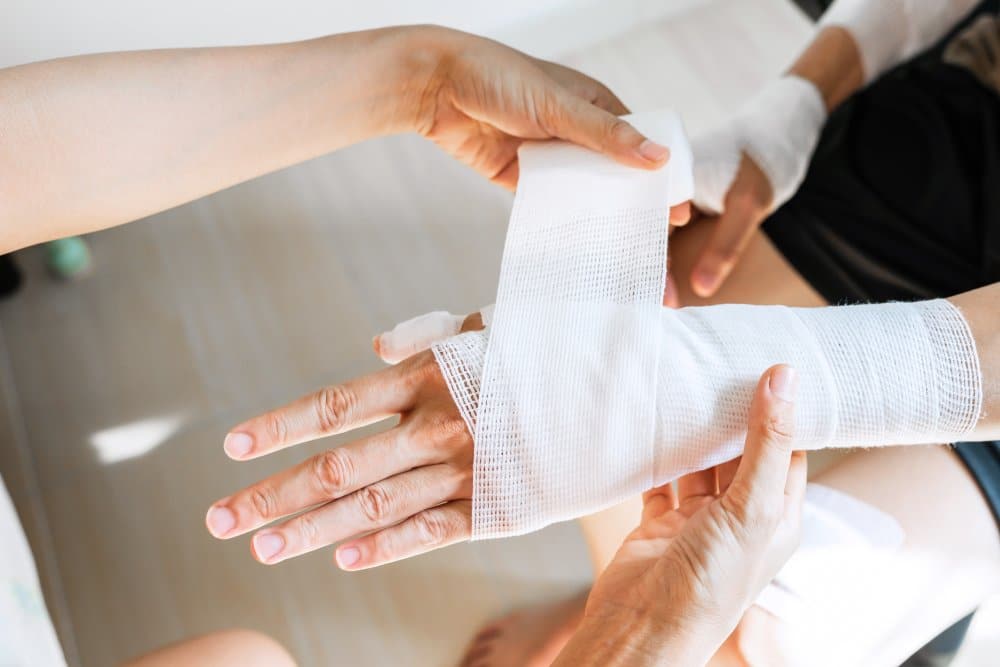Because they impact parts of our bodies that are both regularly used and quite nuanced, hand injuries can be both frustrating and hard to understand in some cases. Luckily, working with an experienced hand doctor will allow you to get to the bottom of any hand injury you’ve sustained, plus to obtain ideal treatment and recover optimally.
At The Orthopaedic Center, we’re proud to offer a huge range of orthopedic doctor services for clients around Tulsa and Jenks, including the best hand doctor services you’ll find in Oklahoma. Here’s a breakdown of hand injuries – the common types out there, which symptoms you may experience, plus some information on hand injury risk factors and the value of working with an experienced hand doctor for any such injury you sustain.

Types of Hand Injury
One of the things that makes hand injuries so nuanced is the fact that there are so many different kinds for a relatively small (but important) area of the body. Hand injuries can include all of the following, plus some common symptoms attached to each:
- Broken or fractured hand: One of the more severe acute hand injuries is a complete break or fracture in one of the bones within the hand or wrist. This can lead to severe pain, swelling and limited mobility in the affected area.
- Broken finger: On the other hand, a broken finger may not cause as much pain or immobility as a full hand break, but it can still be quite uncomfortable and inconvenient. A broken finger can occur in any of the three phalanges – the bones that make up each finger.
- Sprains: While some hand injuries are related to bones, others involve ligaments and tendons. A sprain is when one of these tissues is stretched or torn beyond its normal range of motion. This can lead to significant swelling and discomfort in the hand.
- Strains: Similar to a sprain, a strain occurs when muscles in the hand are overstretched or torn. These types of injuries may also cause significant pain and swelling in the hand, and can make it difficult to perform daily tasks.
- Dislocations: When one of the bones in the hand or wrist is forcibly moved out of its normal position, a dislocation occurs. This type of injury can be quite painful and may require medical attention to properly reset the affected bone.
- Carpal tunnel syndrome: This is a chronic condition caused by pressure on the median nerve in the wrist. Symptoms may include numbness, tingling and weakness in the hand, and it can often be managed with non-surgical treatments.
- Ganglion cysts: These are fluid-filled lumps that can develop within the hand or wrist. While not usually painful, they may cause discomfort and decreased functionality in certain cases.
- Osteoarthritis: A type of degenerative joint disease, osteoarthritis can affect the joints in the hand and cause pain, stiffness and limited mobility.
- Tendinitis: An overuse injury, tendinitis occurs when the tendons in the hand become inflamed and cause pain and discomfort. It is commonly seen in athletes or individuals who regularly use their hands for repetitive tasks.
Hand Injury Risk Factors
There are several factors that may increase an individual’s risk of sustaining a hand injury, including:
- Participating in high-risk activities or sports
- Repeatedly performing tasks that strain the hands and wrists
- Aging, which can weaken bones and make them more prone to fractures
- Having certain medical conditions like osteoporosis or arthritis
It’s important to be mindful of these risk factors and take precautions when engaging in potentially dangerous activities.
Why Work with an Experienced Hand Doctor?
Hand injuries can range from mild discomfort to severe pain and immobility. If you’ve sustained a hand injury, it’s important to seek proper medical treatment from an experienced hand doctor. They have the knowledge, skills, and expertise to accurately diagnose your injury and develop a personalized treatment plan that will help you recover as quickly and fully as possible. They can also provide valuable advice on how to prevent future hand injuries.
In addition to their specialized training in hand injuries, hand doctors also have access to advanced diagnostic tools and treatments that can aid in the healing process. This includes imaging techniques like X-rays, MRI scans, and ultrasounds, which can help identify the extent of an injury and guide treatment decisions. They may also recommend physical therapy or other non-surgical methods for treating certain types of hand injuries.
Furthermore, working with a hand doctor early on after sustaining an injury can greatly improve your chances of a full recovery. They can monitor your progress and make any necessary adjustments to your treatment plan, ensuring that you heal properly and regain full functionality in your hand.
At The Orthopaedic Center, our dedicated team of hand doctors is committed to providing exceptional care and personalized treatment options for all types of hand injuries. Contact us today to schedule an appointment and get on the road to recovery, whether you’re in Tulsa, Jenks or any nearby area.